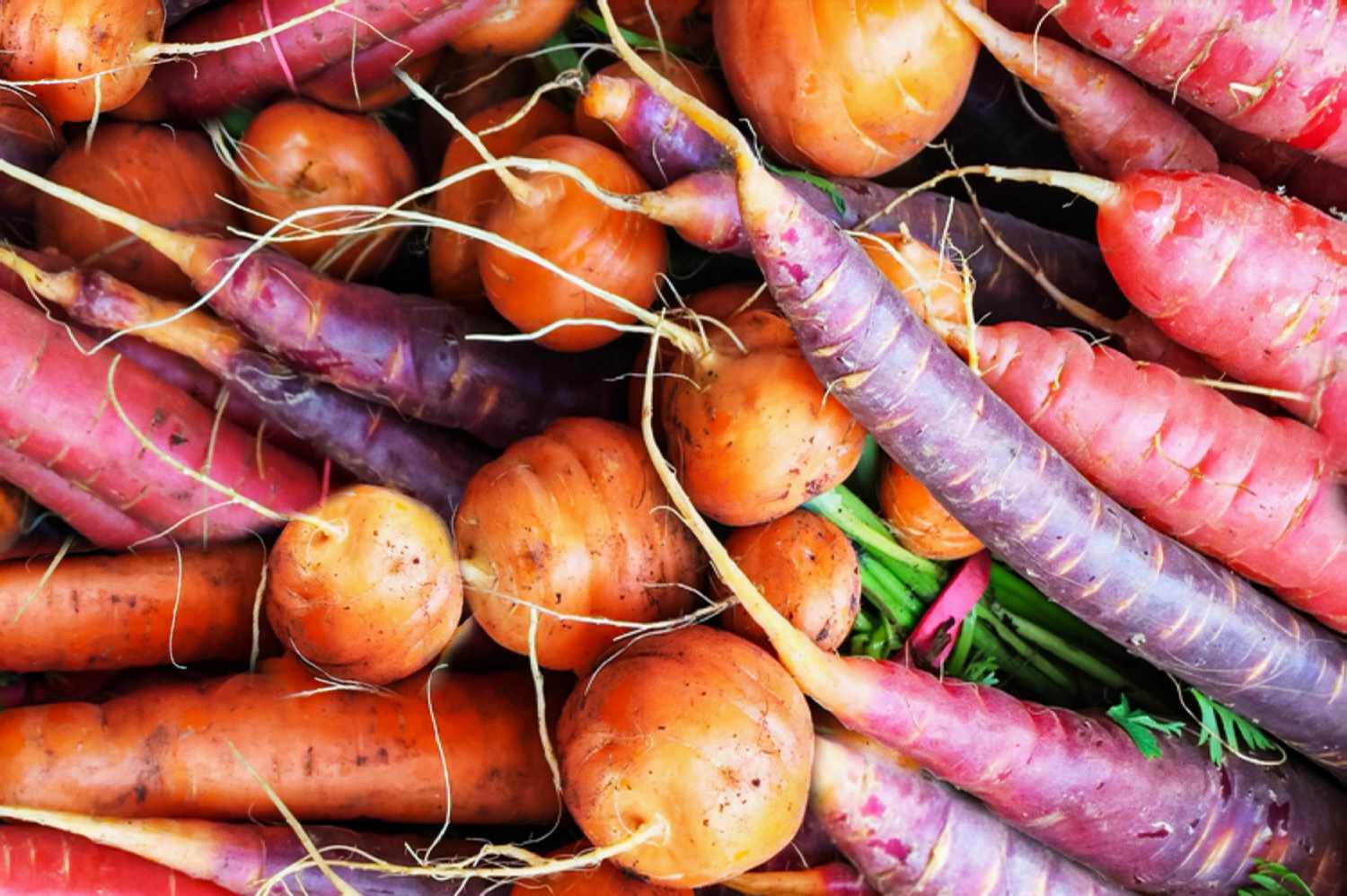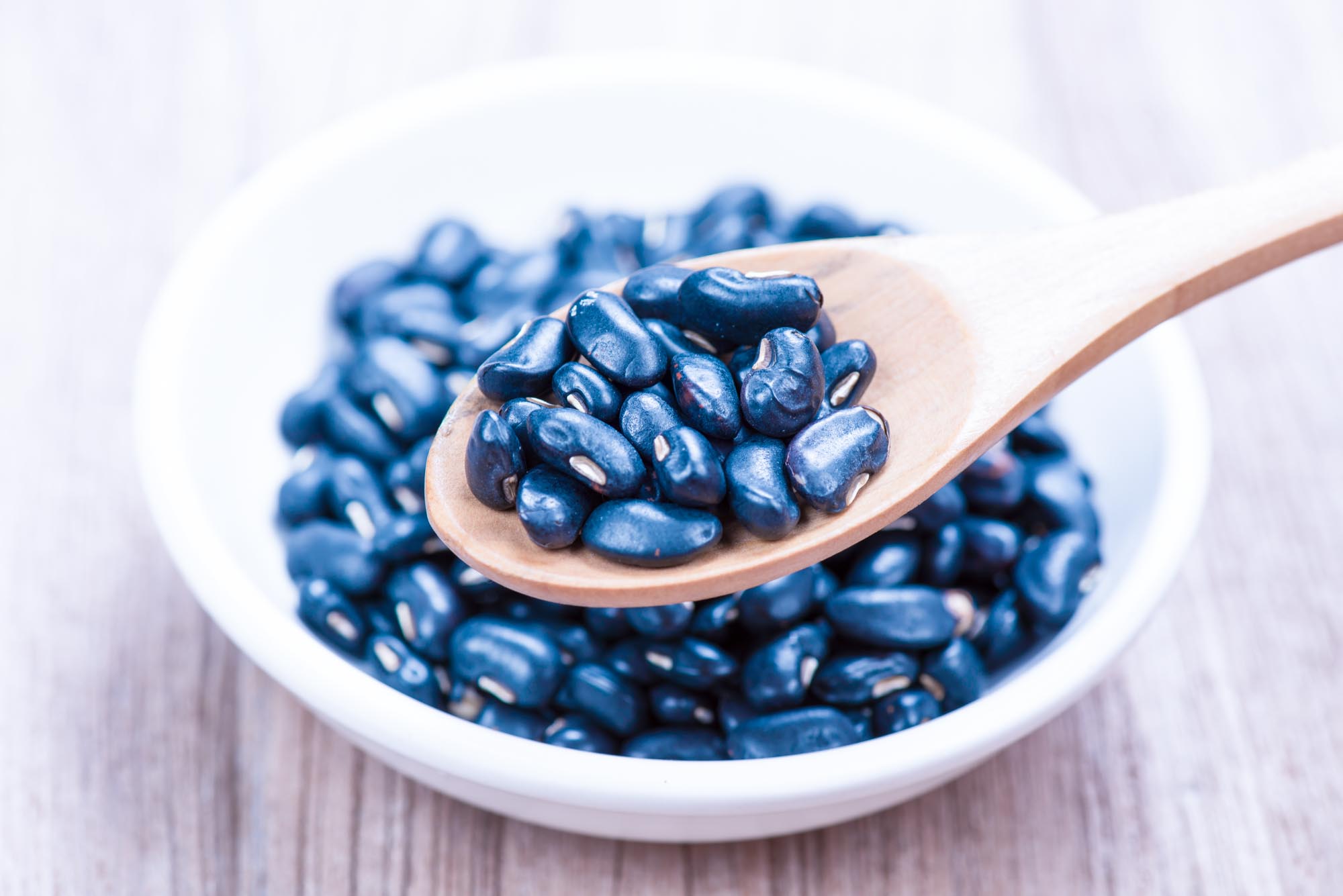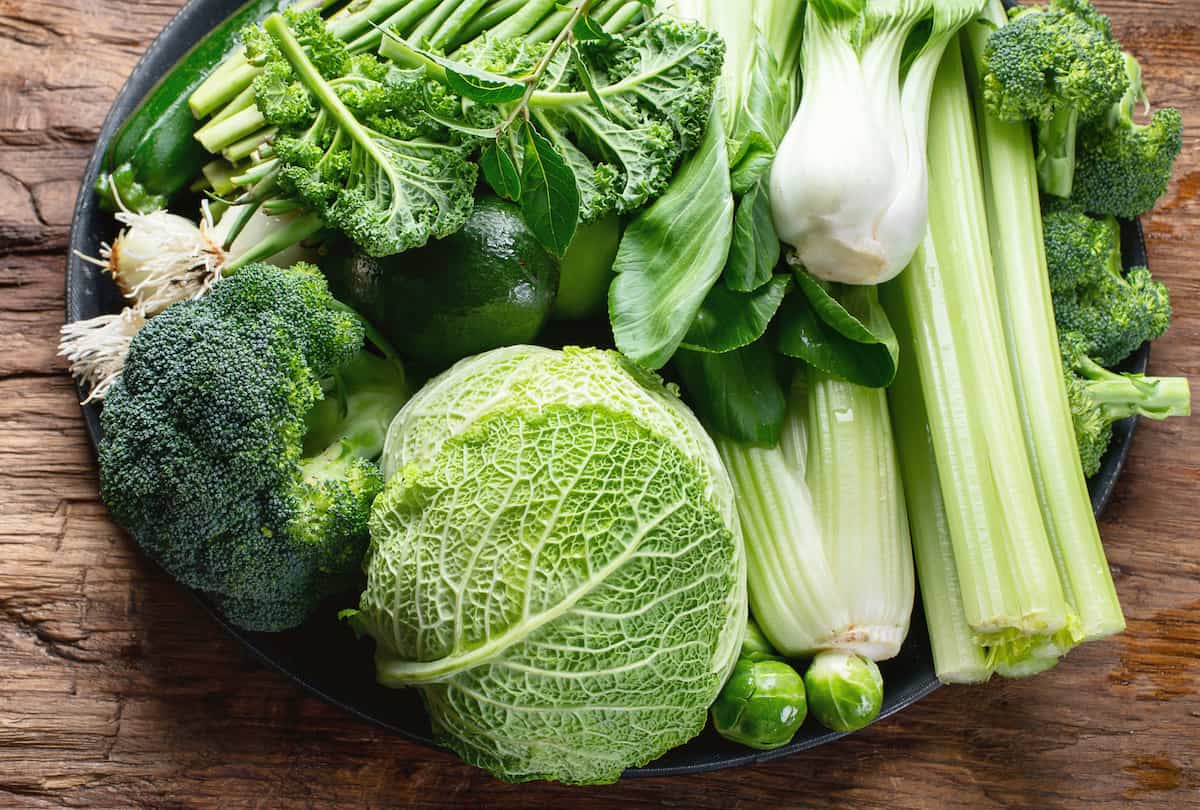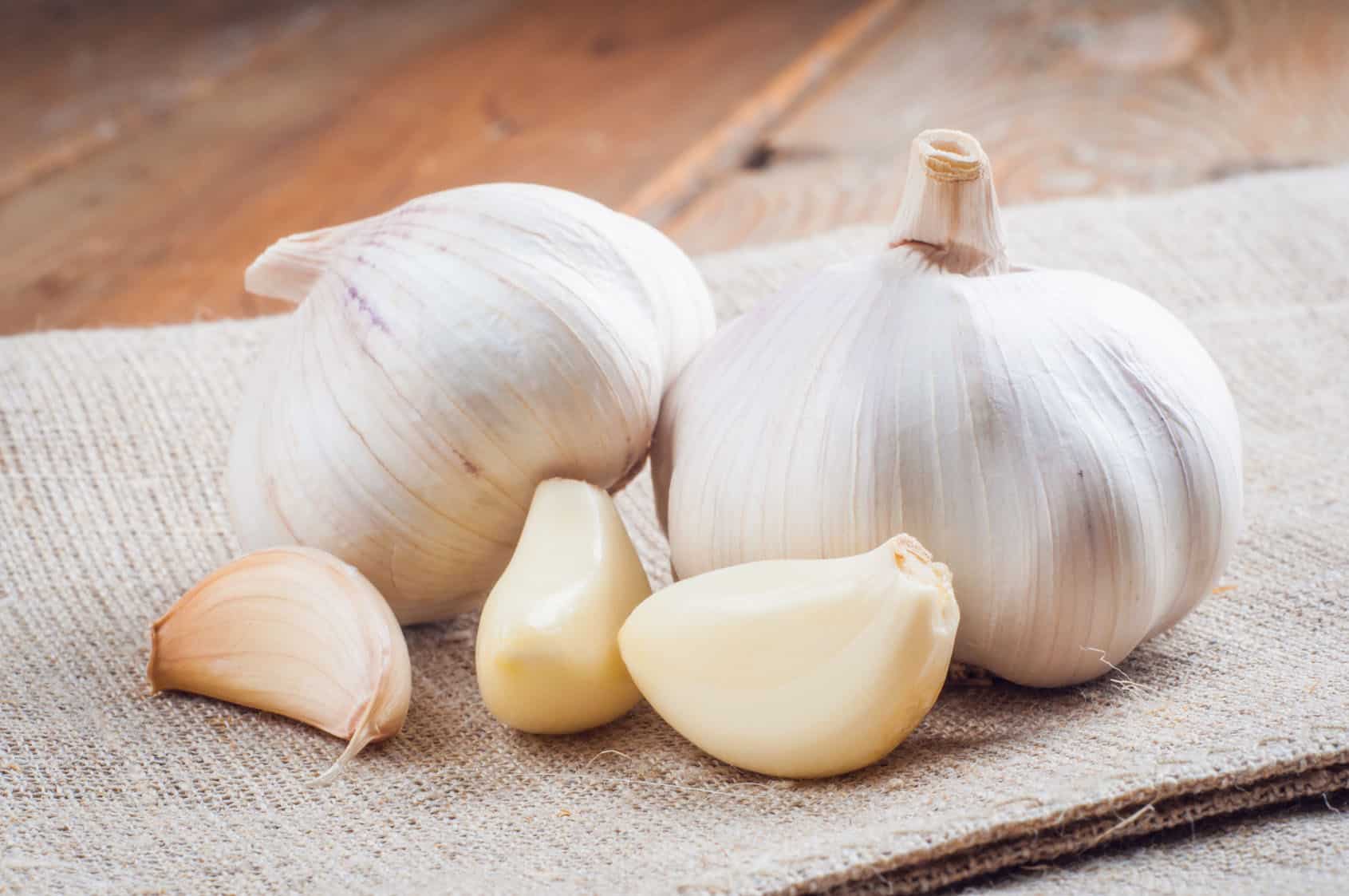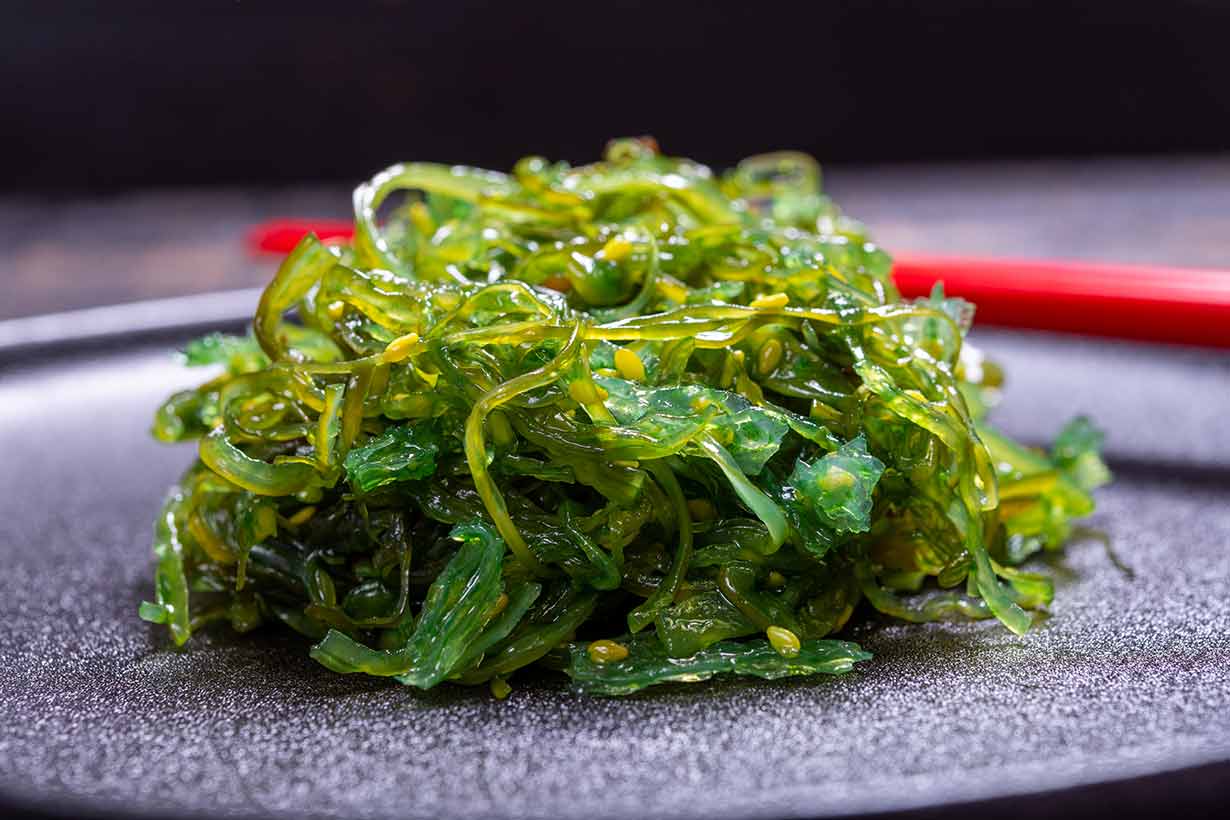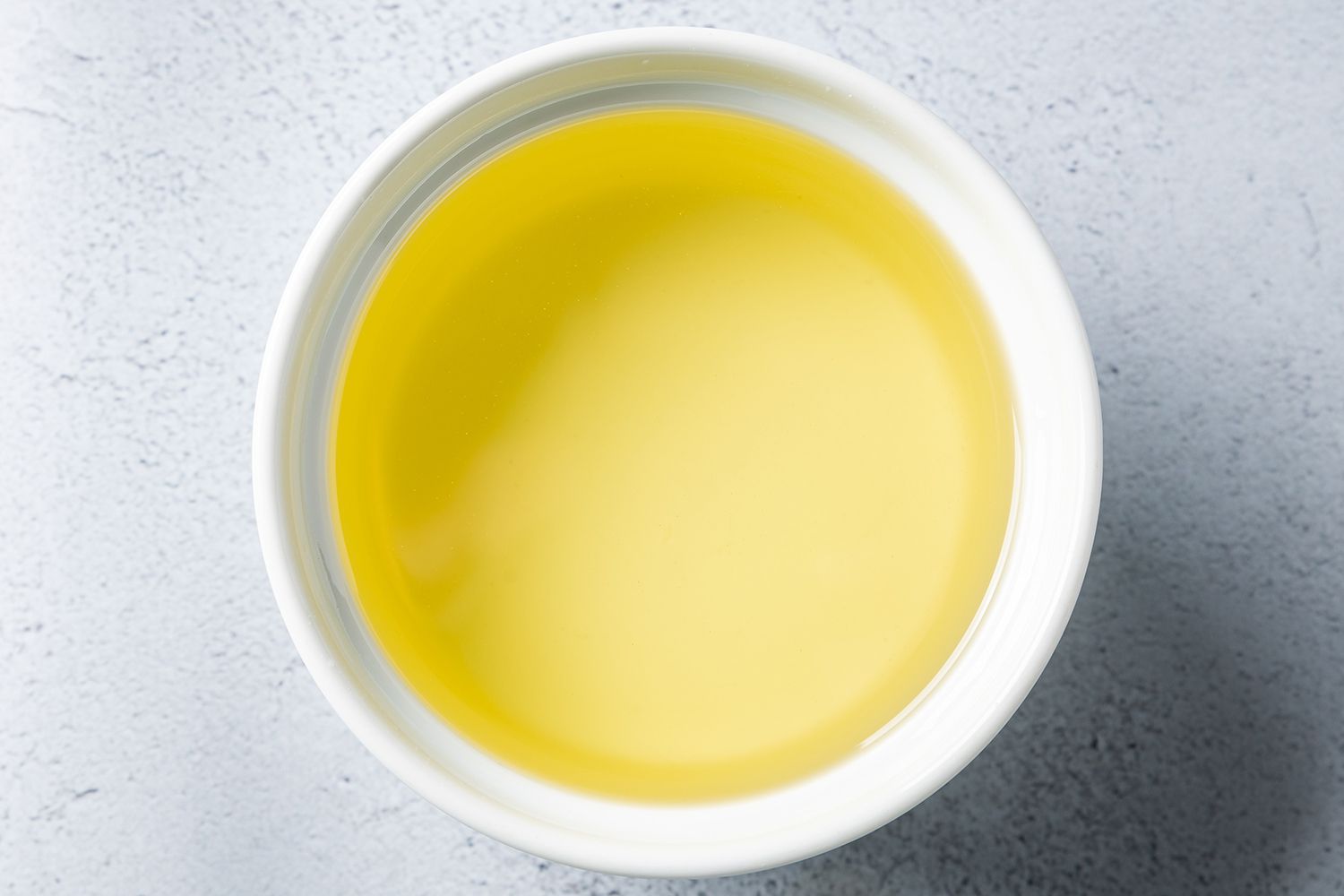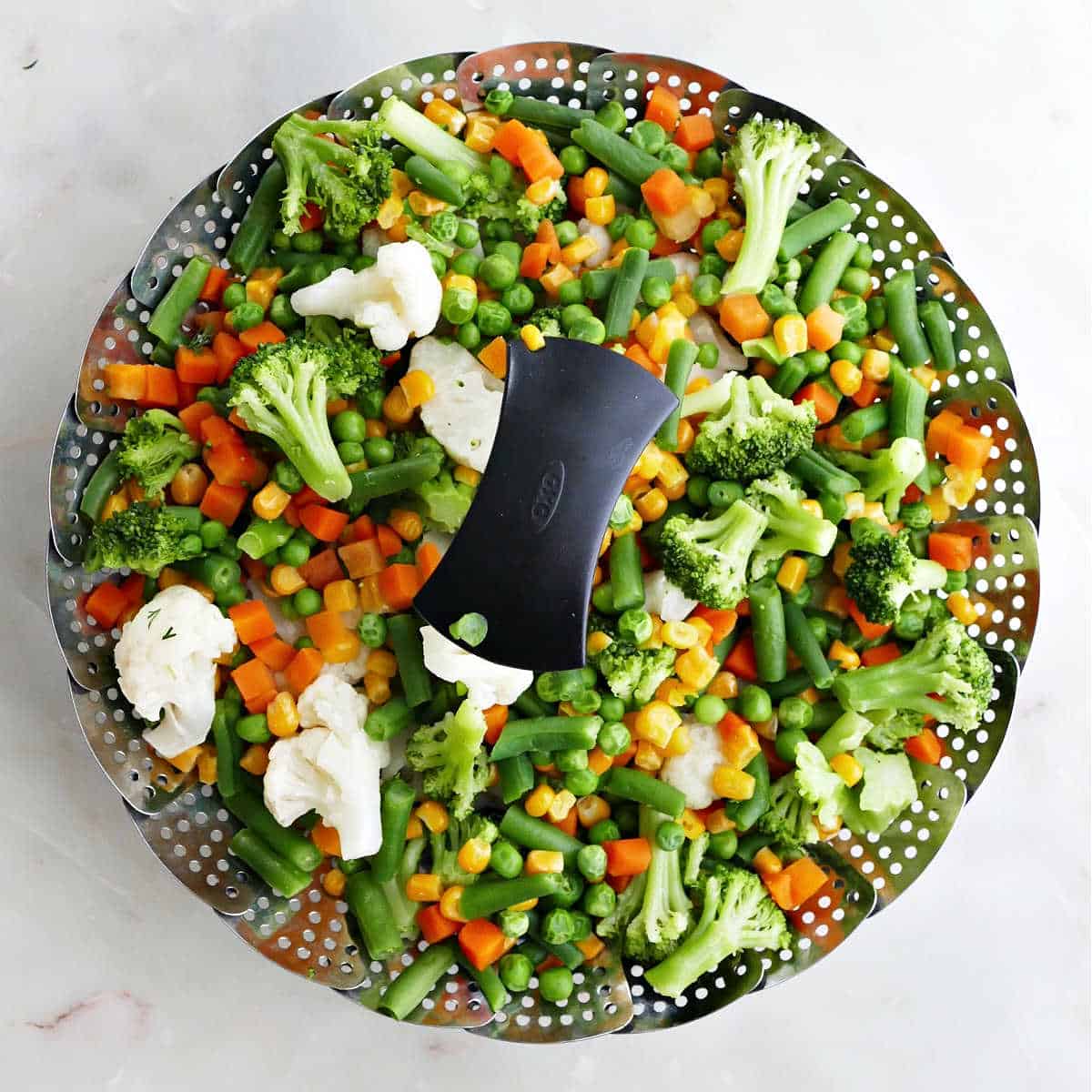Home>Gardening News and Trends>Latest News>What Is Chinese Vegetables
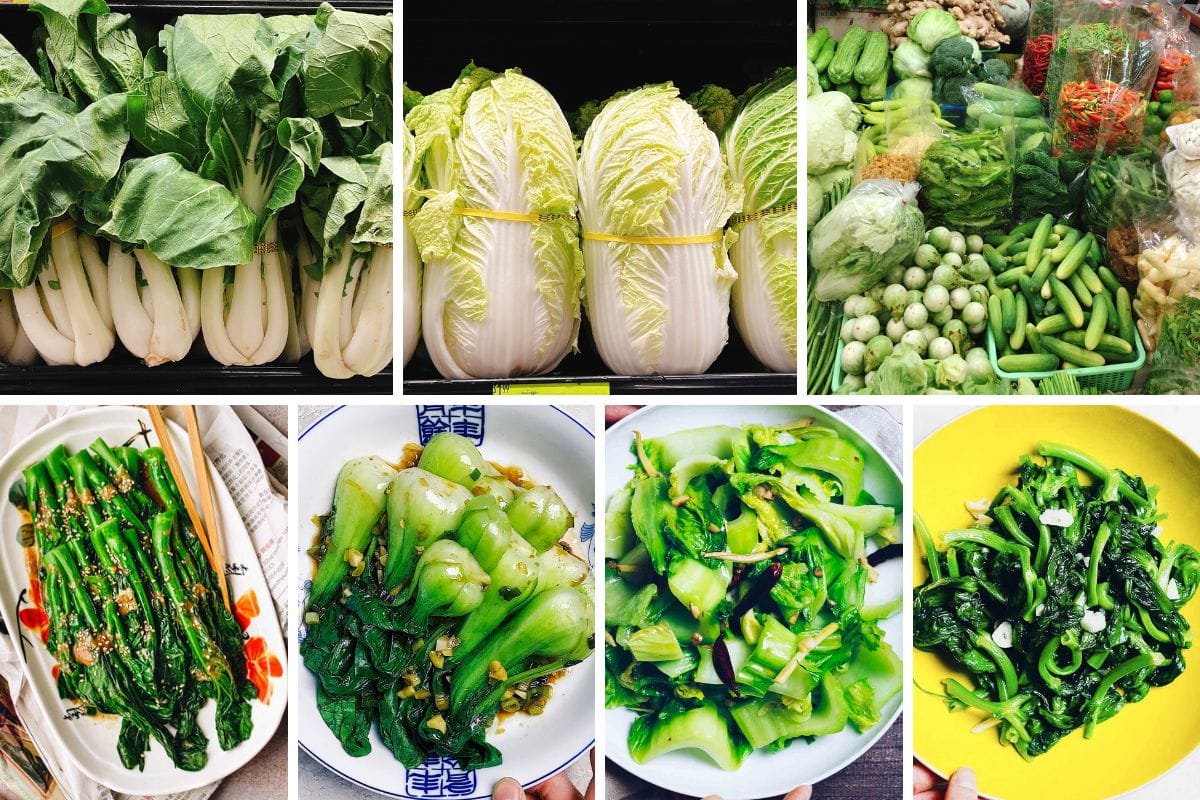

Latest News
What Is Chinese Vegetables
Modified: January 22, 2024
Discover the Latest News on Chinese Vegetables
(Many of the links in this article redirect to a specific reviewed product. Your purchase of these products through affiliate links helps to generate commission for Chicagolandgardening.com, at no extra cost. Learn more)
Table of Contents
Introduction
Chinese cuisine is renowned for its bold flavors, diverse ingredients, and rich culinary traditions. A crucial element that contributes to the complexity and depth of Chinese dishes is the wide variety of vegetables that are used. From leafy greens to root vegetables, each type brings its unique taste and texture to the table.
Chinese vegetables are not only delicious but also highly nutritious, making them a popular choice for health-conscious individuals. They are rich in vitamins, minerals, and antioxidants, providing a multitude of health benefits. Additionally, Chinese cooking methods often involve stir-frying or steaming, which helps to retain the vegetables’ nutrients and preserve their vibrant colors.
Whether you are a fan of Chinese cuisine or just looking to incorporate more vegetables into your diet, understanding the different types of Chinese vegetables can help you explore new flavors and expand your culinary horizons. In this article, we will delve into some of the most popular and widely used Chinese vegetables, highlighting their unique characteristics and gastronomic appeal.
So, if you are ready to embark on a delightful journey through the world of Chinese vegetables, let’s dive in and discover the wonders they have to offer!
Popular Chinese Vegetables
Chinese cuisine incorporates a wide range of vegetables that add vibrant colors, flavors, and textures to dishes. Let’s explore some of the most popular Chinese vegetables:
- Bok Choy: Also known as Chinese cabbage, bok choy is a leafy green vegetable commonly used in stir-fries and soups. It has a crisp texture and a mild, slightly sweet taste.
- Chinese Broccoli: Also called gai lan, Chinese broccoli has long, thick stems and dark green leaves. It has a slightly bitter flavor and is often stir-fried or blanched and served with oyster sauce.
- Chinese Radish: Chinese radish, or daikon, is a type of winter radish that is crisp, juicy, and mildly spicy. It is commonly used in soups, stews, and pickled dishes.
- Chinese Eggplant: Chinese eggplant is smaller and slender compared to the more common Western eggplants. It has a delicate flavor and a tender texture, making it perfect for stir-fries and braised dishes.
- Water Spinach: Also known as morning glory or ong choy, water spinach is a leafy green with hollow stems. It has a slightly sweet and earthy flavor and is often stir-fried with garlic and chili.
- Chinese Long Beans: Chinese long beans, also called yard-long beans, are long and slender with a slightly crunchy texture. They have a mild, grassy flavor and are commonly used in stir-fries.
- Chinese Cabbage: Chinese cabbage, or napa cabbage, has pale green leaves and a mild, sweet flavor. It is commonly used in stir-fries, soups, and fermented dishes like kimchi.
- Lotus Root: Lotus root is a unique vegetable that has a crunchy texture and a slightly sweet taste. It is often used in stir-fries, soups, and as an ingredient in hot pot dishes.
- Snow Peas: Snow peas are flat, tender green pods with a mild, sweet flavor. They are commonly used in stir-fries and salads, adding a satisfying crunch to the dish.
- Shiitake Mushrooms: Shiitake mushrooms are highly prized in Chinese cuisine for their meaty texture and rich umami flavor. They are used in stir-fries, soups, and sauces.
These are just a few of the many delightful Chinese vegetables that grace the tables of Chinese households and restaurants around the world. Each one brings its unique characteristics and taste to dishes, creating a symphony of flavors that tantalize the taste buds.
Leafy Green Vegetables
Leafy green vegetables are a staple in Chinese cuisine, adding freshness, vibrant colors, and a range of textures to dishes. Here are some popular leafy green vegetables widely used in Chinese cooking:
- Bok Choy: Bok choy, also known as Chinese cabbage, is a versatile and widely used leafy green. It has crunchy white stalks and dark green leaves. Bok choy has a mild, slightly sweet flavor and a tender, crisp texture. It is commonly stir-fried with garlic and soy sauce or added to soups and stews.
- Chinese Spinach: Also known as amaranth greens or yin choy, Chinese spinach has tender leaves and stems. It has a mild, slightly earthy taste and a delicate texture. Chinese spinach is often stir-fried, steamed, or added to soups.
- Water Spinach: Water spinach, also called morning glory or ong choy, is a beloved leafy green in Chinese cuisine. It has long, hollow stems and dark green leaves. Water spinach has a slightly sweet and earthy flavor, and is popularly stir-fried with garlic and chili or blanched and served with a sauce.
- Chinese Celery: Chinese celery has long, slender stalks and aromatic leaves. It has a stronger and slightly bitter flavor compared to its Western counterpart. Chinese celery is often stir-fried with meat or used as a flavor enhancer in soups and stews.
- Chinese Mustard Greens: Chinese mustard greens, or gai choy, have broad leaves with a peppery taste. They come in different varieties, ranging from tender and mild to robust and pungent. Chinese mustard greens are commonly stir-fried, pickled, or added to soups and stews.
Leafy green vegetables are not only delicious but also packed with nutrients. They are an excellent source of vitamins A, C, and K, as well as folate and fiber. Incorporating leafy greens into your diet can promote good health and provide a nutritional boost to your meals.
Next time you prepare a Chinese-inspired dish, consider adding some leafy green vegetables to enhance the flavor and appearance of your creation!
Cruciferous Vegetables
Cruciferous vegetables are a group of nutritious and versatile vegetables that belong to the Brassicaceae family. They are known for their distinct cross-shaped flowers and are widely used in Chinese cuisine. Here are some popular cruciferous vegetables found in Chinese dishes:
- Chinese Broccoli: Also known as gai lan, Chinese broccoli is a leafy green vegetable with long, thick stems and dark green leaves. It has a slightly bitter taste and a crunchy texture. Chinese broccoli is often blanched or stir-fried and served with oyster sauce, garlic, or ginger.
- Baby Bok Choy: Baby bok choy is a smaller and more tender version of the regular bok choy. It has crisp, light green stalks and tender leaves. Baby bok choy has a mild, slightly sweet taste and a delicate texture. It is commonly stir-fried, steamed, or added to soups and stews.
- Chinese Cabbage: Chinese cabbage, also known as napa cabbage, is a leafy vegetable with pale green leaves and a mild, sweet flavor. It has a tender yet crunchy texture. Chinese cabbage is often used in stir-fries, soups, and fermented dishes like kimchi.
- Chinese Kale: Chinese kale, also known as kai-lan or Chinese broccoli raab, has long, slender stems and dark green leaves. It has a slightly bitter and nutty flavor. Chinese kale is commonly stir-fried with garlic and oyster sauce or added to soups and stews.
- Chinese Cauliflower: Chinese cauliflower is a variety of cauliflower with a slightly different appearance and taste. It has a looser, more open head and a milder flavor compared to regular cauliflower. Chinese cauliflower is often used in stir-fries, soups, and pickled dishes.
Cruciferous vegetables are not only delicious but also highly nutritious. They are rich in vitamins, minerals, fiber, and antioxidants, making them an excellent addition to a healthy diet. These vegetables are known for their potential health benefits, such as reducing the risk of heart disease, supporting digestion, and promoting overall well-being.
By incorporating cruciferous vegetables into your Chinese-inspired dishes, you can elevate the flavor, texture, and nutritional value of your meals.
Root Vegetables
Root vegetables are a staple in Chinese cuisine, adding depth, flavor, and a satisfying texture to dishes. These vegetables grow underground and are known for their starchy nature and earthy taste. Here are some popular root vegetables found in Chinese cooking:
- Chinese Radish: Chinese radish, also called daikon, is a long and cylindrical root vegetable with crisp, juicy flesh. It has a mildly spicy flavor and is often used in soups, stews, and pickled dishes. Chinese radish can also be stir-fried or shredded in salads.
- Taro: Taro is a starchy root vegetable with a creamy white or purple flesh and a nutty flavor. It can be boiled, steamed, or fried and is used in a variety of Chinese dishes, such as stews, soups, stir-fries, and even desserts.
- Lotus Root: Lotus root is a unique and visually appealing root vegetable with a crunchy texture and a slightly sweet taste. It has a series of small holes that resemble the pattern of a lotus flower. Lotus root is often used in stir-fries, soups, and as an ingredient in hot pot dishes.
- Arrowhead: Arrowhead, also known as Chinese water chestnut, is a tuber-like root vegetable with a crisp, crunchy texture and a mild, slightly sweet flavor. It can be eaten raw, cooked, or pickled, and is often used in stir-fries, salads, or added to Chinese hot pot dishes.
- Chinese Yam: Chinese yam, also called nagaimo or huáishān, is a root vegetable with a slimy texture when grated. It has a mild and starchy flavor. Chinese yam is commonly used in soups, stews, stir-fries, or grated and added to dishes as a thickener.
Root vegetables are not only delicious but also provide a good source of carbohydrates, fiber, and essential nutrients. They are known for their versatility and ability to absorb flavors, making them a perfect complement to various Chinese dishes.
Next time you crave a hearty and satisfying meal, consider incorporating these flavorful root vegetables into your Chinese-inspired recipes.
Gourd Vegetables
Gourd vegetables are a group of versatile and nutritious vegetables that come in various shapes, sizes, and flavors. They are commonly used in Chinese cuisine, adding a unique taste and texture to a wide range of dishes. Let’s explore some popular gourd vegetables found in Chinese cooking:
- Bitter Melon: Bitter melon, also known as bitter gourd or karela, is a distinctive gourd with a bumpy, ridged surface and a bitter taste. Despite its strong flavor, it is highly valued for its health benefits. Bitter melon is often stir-fried, stuffed, or added to soups and stews.
- Winter Melon: Winter melon, also called ash gourd or white gourd, is a large, oblong gourd with a pale green exterior and white flesh. It has a mild flavor and a soft, tender texture. Winter melon is commonly used in soups, stews, and stir-fries, and is prized for its ability to absorb flavors.
- Snake Gourd: Snake gourd is a long, cylindrical gourd with a smooth, green skin and mild flavor. It has a crunchy texture and is often used in stir-fries, curries, and soups. Snake gourd is popular due to its high water content and the cooling effect it provides in hot climates.
- Angle Gourd: Angle gourd, also known as luffa or Chinese okra, is a long, slender gourd with ridged skin. It has a mild, slightly sweet flavor and a crunchy texture when cooked. Angle gourd is commonly used in stir-fries, soups, and curries.
- Loofah Gourd: Loofah gourd, or sponge gourd, is a long, cylindrical gourd with fibrous flesh and a mild taste. When young, it can be cooked and eaten like a vegetable, but when mature, it is left to ripen and develop a fibrous network that is used as a natural sponge.
Gourd vegetables are not only delicious but also nutritious. They are low in calories, high in water content, and rich in vitamins and minerals. Gourd vegetables are known for their cooling properties, making them a popular choice during hot summer months in Chinese cuisine.
Next time you want to add a distinct flavor and texture to your Chinese-inspired dishes, consider incorporating these versatile and delicious gourd vegetables.
Nightshade Vegetables
Nightshade vegetables are a group of vegetables that belong to the Solanaceae family. They are widely used in Chinese cuisine, adding a unique flavor and variety to dishes. Despite their name, these vegetables are not inherently harmful but can cause sensitivity in some individuals. Let’s explore some popular nightshade vegetables found in Chinese cooking:
- Eggplant: Eggplant is a versatile nightshade vegetable known for its deep purple color and mild, slightly bitter taste. It has a creamy texture and is often used in stir-fries, braised dishes, or grilled. Popular Chinese eggplant dishes include Sichuan-style mapo eggplant and stir-fried eggplant with garlic sauce.
- Bell Peppers: Bell peppers come in vibrant colors, including green, red, yellow, and orange. They have a sweet and crisp flavor, adding a refreshing element to Chinese dishes. Bell peppers are commonly used in stir-fries, salads, and stuffed dishes.
- Chili Peppers: Chili peppers have various degrees of spiciness and are used to add heat and flavor to Chinese dishes. They are commonly used in sauces, stir-fries, and spicy soups. Popular Chinese chili pepper varieties include Sichuan peppercorn, Thai chili, and Bird’s eye chili.
- Potatoes: Potatoes, particularly sweet potatoes, are a beloved staple in Chinese cuisine. They are used in various forms, such as stir-fried, boiled, mashed, or in soups. Chinese dishes like Sweet and Sour Pork often incorporate potatoes as a hearty ingredient.
- Tomatoes: Tomatoes, though botanically a fruit, are commonly treated as a vegetable in cooking. They add a tangy, juicy flavor to Chinese dishes, such as tomato and egg stir-fry or tomato-based sauces used in braised dishes or hot pots.
Nightshade vegetables offer a range of flavors and textures, contributing to the diverse taste profiles in Chinese cuisine. It’s important to note that some individuals may experience sensitivity or allergic reactions to nightshade vegetables, so consider your personal dietary needs and preferences when incorporating them into your meals.
Whether you enjoy the mild bitterness of eggplant, the sweetness of bell peppers, the heat of chili peppers, the comforting presence of potatoes, or the tanginess of tomatoes, these nightshade vegetables can add depth and complexity to your Chinese-inspired dishes.
Bean and Pea Vegetables
Bean and pea vegetables play a significant role in Chinese cuisine, providing protein, fiber, and a hearty texture to various dishes. These leguminous vegetables are not only nutritious but also delicious. Let’s explore some popular bean and pea vegetables found in Chinese cooking:
- Soybeans: Soybeans, also known as edamame, are a versatile legume used in many Chinese dishes. They have a nutty flavor and a firm texture. Soybeans can be boiled, steamed, stir-fried, or fermented into products like tofu and soy sauce. They are also used to make soy milk and are a common ingredient in vegetarian and vegan dishes.
- Mung Beans: Mung beans, also called green gram, are small, green legumes known for their mild flavor and soft texture. They are commonly sprouted and used in stir-fries, salads, and soups. Mung bean noodles and mung bean paste are popular ingredients in Chinese desserts.
- Snow Peas: Snow peas are flat, tender pea pods with a sweet, crisp flavor. They are often used in stir-fries and salads, providing a satisfying crunch and bright green color to the dishes. Snow peas are a popular ingredient in Chinese dishes like Stir-Fried Snow Peas and Beef or Kung Pao Chicken.
- Sugar Snap Peas: Sugar snap peas are the perfect balance between the sweetness of snow peas and the crunchiness of garden peas. They have plump pods that encase tender peas. Sugar snap peas are commonly stir-fried, sautéed, or added to vegetable medleys.
- Fava Beans: Fava beans, also called broad beans, are large, flat, and bright green legumes with a slightly earthy taste. They have a meaty texture and are often used in soups, stews, and stir-fries. Fava beans are also a popular ingredient in Chinese dumplings and bean pastes.
Bean and pea vegetables are not only tasty additions to Chinese dishes but also bring valuable nutritional benefits. They are excellent sources of plant-based protein, fiber, vitamins, and minerals. Incorporating these legumes into your meals can contribute to a well-rounded and balanced diet.
Whether you’re enjoying the crunch of snow peas, the creaminess of fava beans, or the versatility of soybeans, these bean and pea vegetables add depth, texture, and a nutritious foundation to your Chinese-inspired culinary creations.
Edible Mushrooms
Mushrooms are highly valued in Chinese cuisine for their distinct earthy flavors and unique textures. They are a versatile ingredient used in a variety of dishes, from stir-fries to soups to rice and noodle dishes. Let’s explore some popular edible mushrooms found in Chinese cooking:
- Shiitake Mushrooms: Shiitake mushrooms are prized for their rich, meaty flavor and slightly chewy texture. They are a staple in Chinese cuisine and are commonly used in stir-fries, soups, and braised dishes. Dried shiitake mushrooms are also popular and add depth of flavor to broths and sauces.
- Wood Ear Mushrooms: Wood ear mushrooms, also known as black fungus or cloud ear fungus, have a firm, gelatinous texture and a mild flavor. They are often used in stir-fries, soups, and cold salads. Wood ear mushrooms are prized for their ability to absorb flavors and add an interesting texture to dishes.
- Enoki Mushrooms: Enoki mushrooms have long, thin, white stems and small, delicate caps. They have a mild, slightly sweet flavor and a crunchy texture. Enoki mushrooms are commonly used in soups, hot pots, and stir-fries. They make for an elegant and visually appealing addition to any dish.
- Oyster Mushrooms: Oyster mushrooms have a delicate, velvety texture and a mild, savory flavor. They are commonly used in stir-fries, soups, and noodle dishes. Oyster mushrooms are known for their ability to absorb flavors and are a popular substitute for meat in vegetarian and vegan dishes.
- Straw Mushrooms: Straw mushrooms are small, delicate mushrooms with a mild, slightly nutty flavor. They have a soft texture and are often used in stir-fries, soups, and hot pots. Straw mushrooms are a common ingredient in Chinese dishes like Drunken Chicken and Hot and Sour Soup.
Edible mushrooms add a savory and umami-rich element to Chinese dishes, enhancing the overall taste. They are also known for their potential health benefits, as they are low in calories, a good source of protein, fiber, and essential nutrients like B vitamins and minerals.
Whether you’re savoring the meaty shiitake mushrooms, the crunch of enoki mushrooms, or the unique texture of wood ear mushrooms, exploring the world of edible mushrooms in Chinese cuisine is sure to elevate your culinary experience.
Pickled and Preserved Vegetables
Pickled and preserved vegetables are an essential part of Chinese cuisine, adding tangy, zesty, and briny flavors to dishes. These preserved vegetables add depth and complexity, balancing the richness of other ingredients. Let’s explore some popular pickled and preserved vegetables found in Chinese cooking:
- Pickled Mustard Greens: Pickled mustard greens, also known as suan cai or Chinese sauerkraut, are made by fermenting mustard greens with salt and other seasonings. They have a pungent and tangy flavor that adds a unique zest to sautés, stir-fries, and noodle dishes.
- Pickled Radish: Pickled radish, or zhà cài, is made by fermenting daikon radish with salt and spices. It has a crisp texture and a sharp, sour taste. Pickled radish is commonly used as a condiment in buns, baozi, and as an ingredient in stir-fries and soups.
- Pickled Ginger: Pickled ginger, or gāri, is made from young ginger that is pickled in a mixture of vinegar and sugar. It has a slightly sweet and tangy flavor with a hint of spiciness. Pickled ginger is often served as a palate cleanser with sushi, but it also adds a delightful kick to stir-fries, marinades, and pickling recipes.
- Dried Fermented Black Beans: Dried fermented black beans, also known as douchi, are soybeans that have been salted and fermented. They have a pungent and savory flavor. Dried fermented black beans are commonly used as a seasoning in stir-fries, sauces, and braised dishes, adding depth and complexity to the flavors.
- Preserved Vegetables: Preserved vegetables, or mǔ cài, are made by salt-pickling or sun-drying vegetables like mustard greens, radish leaves, and bamboo shoots. They have a sour, salty, and slightly bitter taste. Preserved vegetables are often used in stir-fries, soups, and hot pots, and are particularly popular in Sichuan cuisine.
Pickled and preserved vegetables bring a delightful contrast to Chinese dishes, cutting through rich and heavy flavors with their tangy and sharp profiles. They also offer a longer shelf life, allowing for extended enjoyment and versatility in the kitchen.
From the complex flavors of pickled mustard greens to the tanginess of pickled radish, incorporating these pickled and preserved vegetables into your Chinese culinary repertoire will add a burst of flavor and authenticity.
Conclusion
Chinese vegetables are an integral part of the rich and diverse world of Chinese cuisine. From leafy greens to root vegetables, gourd vegetables to nightshade vegetables, bean and pea vegetables to edible mushrooms, and pickled and preserved vegetables, Chinese cuisine showcases a wide array of flavors, textures, and nutritional benefits.
These vegetables not only add depth and complexity to Chinese dishes but also offer a myriad of health benefits. They are packed with essential vitamins, minerals, fiber, and antioxidants that promote overall well-being. Incorporating Chinese vegetables into your diet can help diversify your palate, increase your vegetable intake, and enhance your culinary skills.
Whether you are a fan of stir-fries, soups, or noodle dishes, exploring the world of Chinese vegetables allows you to discover new flavors, experiment with different cooking techniques, and create unique and delightful meals. Don’t be afraid to try new vegetables and incorporate them into your favorite recipes.
With their vibrant colors, fresh flavors, and abundant nutritional value, Chinese vegetables offer both culinary delights and health benefits. So, whether you are a seasoned home cook or a culinary enthusiast, embark on a delicious journey by exploring the wonderful world of Chinese vegetables and elevate your dining experience to new heights.
